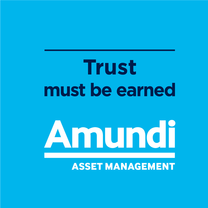Newsroom
Research Paper - Global Investment Views - June 2018
United Kingdom, May 24, 2018

Go the extra mile, but check the exits
A tug of war between downward and upward forces is preventing clear directional trends in the markets: equities are moving in a broad trading range, below year-to-date highs, and, in general, we have entered into a regime of diminished returns. Sensitivity to news flow is, and will continue to be, very high, as markets try to adjust to new financial and economic conditions. How should investors navigate this new phase? First, they should be aware of the mid-term scenario, which will be increasingly challenging (ie, risk of recession, risk of policy mistakes) while playing three major short-term themes. First, the economic outlook is still sound, but with the peak of economic acceleration, we believe, now behind us. Higher oil prices and protectionist talk support this, but without major disruption, as our central case still sees the oil price remaining stable around current levels and no full-on trade war materialising. World GDP growth is expected to be around 4% in 2018, and slightly below 4% in 2019, but still above potential for major economies. On top of this, the narrative of global synchronised growth is losing momentum, with the US still leading (and likely accelerating) among developed markets, thanks to the extension of the cycle, supported by the fiscal boost. Second, central banks (CB) will continue to drift away from their policies of exceptional easing, even if gradually and at a slow pace, as inflation is not viewed to be a major threat at this point. In the Eurozone, inflation is far from being a problem, and the current deceleration of the economy, even if downplayed by the ECB and likely temporary, could further slow the pace of ECB tapering. In the US, the normalisation path seems clearer and the Fed appears keen to accept a modest overshoot of inflation above the target, waiting for full employment wage growth to finally kick in. Third, we may see phases of appreciation of the US dollar, but these should be transitory, as a consequence of perceived temporary divergences in CB policy normalisation and better risk sentiment while the long-term forces (higher US deficit and debt, diversification in international CB reserves) should work in favour of a weaker USD. This dollar appreciation should not be seen as a major threat for emerging markets. Current conditions are tougher (stronger USD, higher US rates, idiosyncratic stories), but as these adjustments are absorbed through higher spreads and weaker FX, EM opportunities may open again, with higher selectivity and focus on specific drivers (ie, oil, electoral cycle, external vulnerability). In this environment, investors should continue to tactically go the extra mile, playing the current adjustments (strong growth, but peaking, low inflation, still accommodative and asynchronous CB) through relative value, bottom-up selection and diversification of strategies/ styles. Volatility in the coming weeks could be considered an opportunity to re-examine the most impacted asset classes. At the same time, investors should be prepared for turning (progressively) the ship around (in risk exposure), amid possible medium-term real and/or financial correction, driven by endogenous/exogenous forces. In this transition period, liquidity management will remain key for investors to quickly adjust and rotate portfolios, as well as capital preservation.
Experts
Vincent has been Group Chief Investment Officer since February 2022. Previous to that, he was the Group Deputy CIO of Amundi since 2015. He is a member of the Globa[...]
Read moreMonica Defend, Head of Amundi Investment Institute. Monica is Head of the Amundi Investment Institute, which was created in February 2022, and a member of Amundi's Exe[...]
Read moreAbout Amundi
About Amundi
Amundi, the leading European asset manager, ranking among the top 10 global players[1], offers its 100 million clients - retail, institutional and corporate - a complete range of savings and investment solutions in active and passive management, in traditional or real assets. This offering is enhanced with IT tools and services to cover the entire savings value chain. A subsidiary of the Crédit Agricole group and listed on the stock exchange, Amundi currently manages more than €2.3 trillion of assets[2].
With its six international investment hubs[3], financial and extra-financial research capabilities and long-standing commitment to responsible investment, Amundi is a key player in the asset management landscape.
Amundi clients benefit from the expertise and advice of 5,600 employees in 35 countries.
Amundi, a trusted partner, working every day in the interest of its clients and society
Footnotes
- ^ [1] Source: IPE "Top 500 Asset Managers" published in June 2024 based on assets under management as of 31/12/2023
- ^ [2] Amundi data as at 31/03/2025
- ^ [3] Paris, London, Dublin, Milan, Tokyo and San Antonio (via our strategic partnership with Victory Capital)
Footnotes





